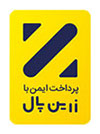The third part in my series on teaching your child a non-native language is all about different language-learning activities that you can do with your kid. So far in the series I have written about the things you need to take into consideration before embarking on such a journey and which family language strategy you should use.
Enough with the theory, today we come to what you can do to help your little one learn the chosen language! Many of the activities are simple ones for which you do not need much preparation, but others you will have to invest a fair amount of time in.
There are two fundamental principles you need to keep in mind when looking for activities: they should be fun and motivating for your child – and also for yourself!
Activities to boost language learning
New vocabulary and language structures are more effectively imprinted into memory when the learning is combined with an activity. In the below links you can find different activities for kids of all ages – try them out and find the ones that suit your child’s interests and that you enjoy yourself as well!
Three of my posts focus on activities:
Fun ways for kids to learn new vocabulary
14 fun activities for a fortnight of word play
Fun and games with words
The following three links will provide you with activities for many months!
Activities to support multilingualism at home (activity instructions in no less than 23 languages!)
50 activities to promote language-learning (dense text but plenty of great ideas)
Fun ideas for kids learning languages (for English, but the activities can be done in any language)
Reading
I couldn’t write a post about language learning activities without emphasising the importance of books and reading with your child. Visit your local library to find new books in your target language or arrange book swaps with other families.
In my post Resources for multilingual families, part 1 I highlight a few free resources for online books. In Trilingual Mama’s post you can find more online books in multiple languages.
Online tv and radio
The best way to learn a language is through interaction, so speaking, singing, playing and doing different activities in the language should be top of your list of things to do. When your child’s vocabulary increases and you need an even more varied exposure to the language there are plenty of resources available online.
Radio is an often forgotten media, but it is a great way of introducing a language in a less intrusive way – click on this link from Trilingual Children to find a list of kids’ radio stations in different languages.
With slightly older children, you might want to check out news sites aimed at a younger audience, you can find many links in Expat Since Birth’s post Online news sites for children.
… and why not learn a language alongside your child!
There are lot of free resources online depending on which language you are learning – check out these two sites to start with: Omniglot and Foreign Service Institute.
Please let me know which activities are most popular in your family!
May the peace and power be with you.

 Persian
Persian  English
English  Arabic
Arabic 


